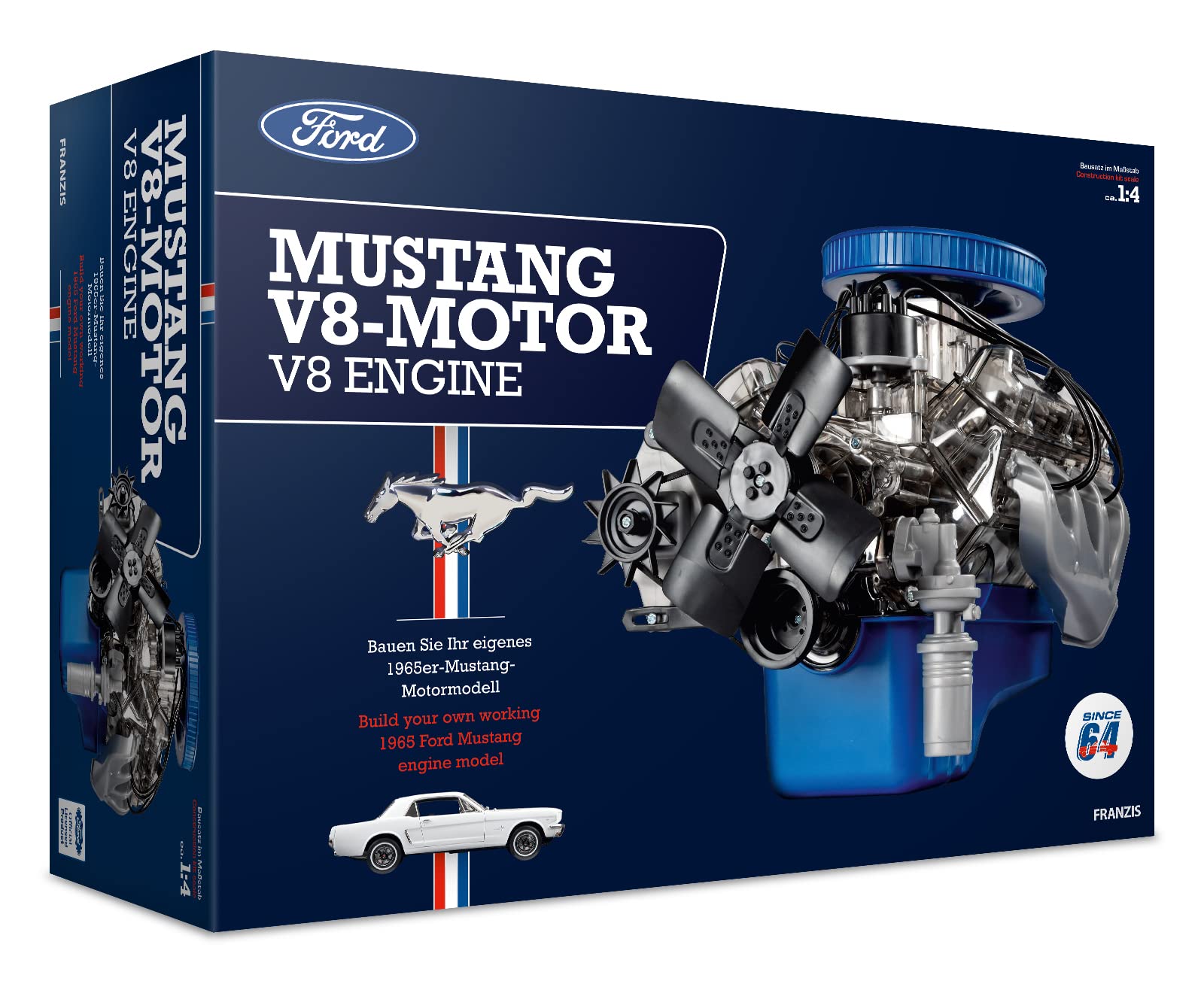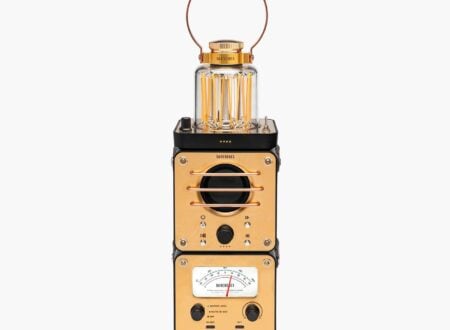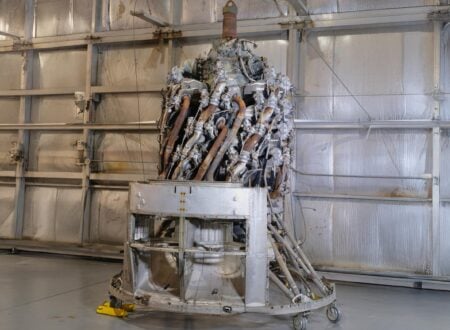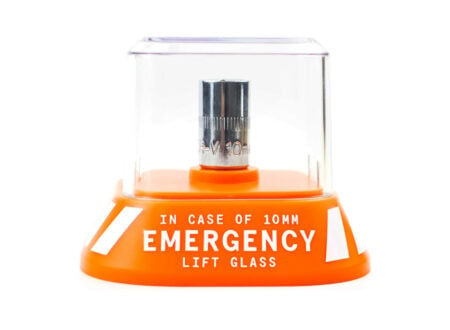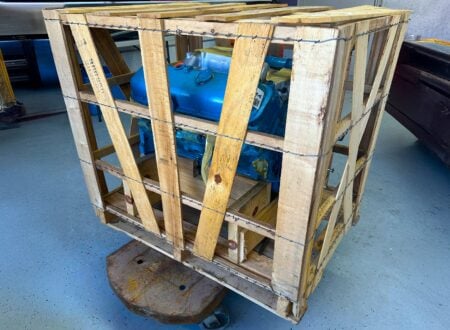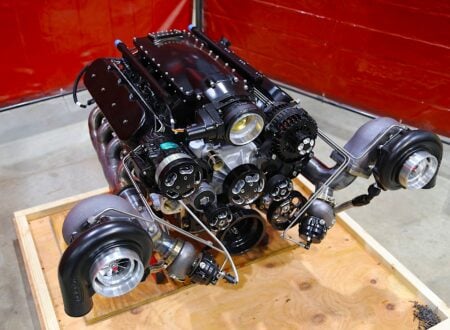This is a 1965 Ford Mustang K-Code 289 V8 kit – a transparent 1:4 scale model of the iconic V8 consisting of over 200 parts that all either click together or use screws – there is no gluing or painting required.
Once assembled the built-in electric motor will turn the crankshaft which sets the cam, valves, pistons, and connecting rods in motion just like the real engine – it even has LEDs in each cylinder that fire like spark plugs at the correct moment.
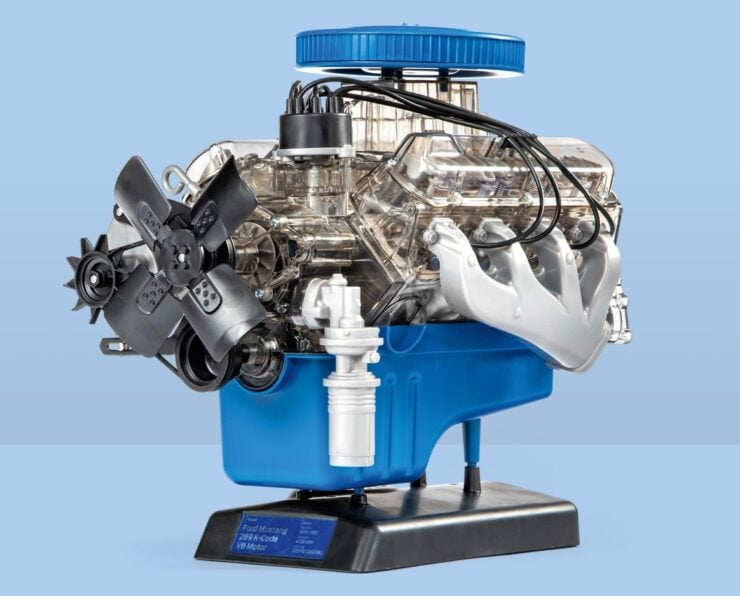

History Speedrun: The Ford K-Code 289 V8
The Ford 289 K-code V8 was the high-performance centerpiece of Ford’s small-block engine line in the mid-1960s. It came from the same Windsor engine series that began with the 221 and 260 V8s, first appearing in 1962.
These compact, lightweight, small block V8s were designed to power Ford’s new generation of midsize cars, and by 1963, the 289 had arrived with a larger 4.00 inch bore and 2.87 inch stroke, offering 289 cubic inches of displacement or 4.7 liters.
While early versions of the 289 produced between 195 and 225 bhp depending on carburetion and other factors, the K-code, officially introduced late in 1963, was a different animal entirely. It was fitted with solid lifters, a high-lift, long-duration camshaft, a dual-point ignition system, heavy-duty connecting rods, and forged aluminum pistons. With a 10.5:1 compression ratio and a four-barrel carburetor, the K-code produced a factory-rated 271 bhp at 6,000 rpm and 312 lb ft of torque at 3,400 rpm.
Although it was initially installed in the Ford Fairlane, the K-code really found fame in the Mustang shortly that model’s launch in mid-1964. Buyers could option it in both coupe and fastback forms, transforming the lightweight pony car into a serious performer.
The K-code, also known as the HiPo (High Performance) 289, powered Carroll Shelby’s 1965 GT350, where it received further tuning for 306 bhp – essentially a race-ready variant built for SCCA competition. Each K-code engine came with a special “Hi-Po” badge on the fender and carried upgraded driveline components, including a heavy duty clutch, driveshaft, and rear differential to handle the extra output.
The K-code would remain available through the 1967 model year, after which it was discontinued as Ford phased in the 302 cubic inch V8. The 302 shared the same basic Windsor block design but used a longer 3.00 inch stroke for additional torque and improved drivability.
Though the K-code’s reign was brief, its performance and racing pedigree made it one of the most respected Ford small-blocks ever built. Genuine factory K-code cars are among the most sought-after early Mustangs today.
The K-Code 289 V8 Model Kit Shown Here
The engine you see here is a 1:4 scale model version of the classic Ford K-code V8 developed by Franzis, and German model and publishing company.
They used real Ford blueprints to create this kit, and as mentioned above, once it’s assembled the crankshaft, cam, pushrods, rockers, valves, pistons, and connecting rods all move just like they do in the real engine – there are even LED spark plugs that illuminate at the right moment in the cycle.
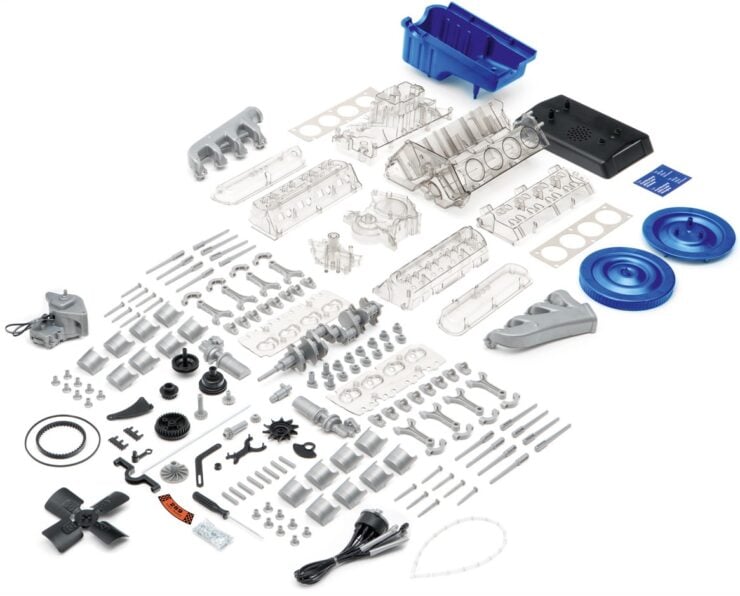

This kit is made up of approximately 200 parts and they all either snap or screw together, there’s no glueing or painting needed. It also has an integrated sound module that produces the original V8 engine sound, as well as an accompanying book with illustrated assembly instructions.
It’s now for sale on the official Franzis Amazon store here and assembly time can vary from two hours on up depending on the experience level of the assembler.
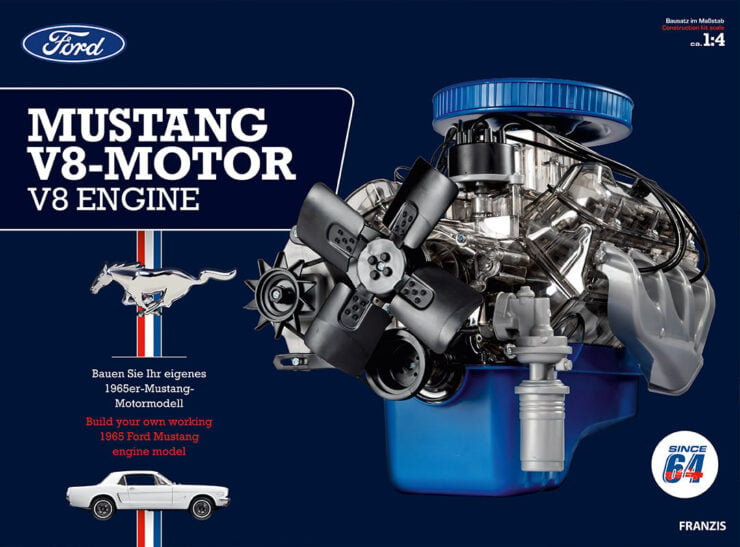
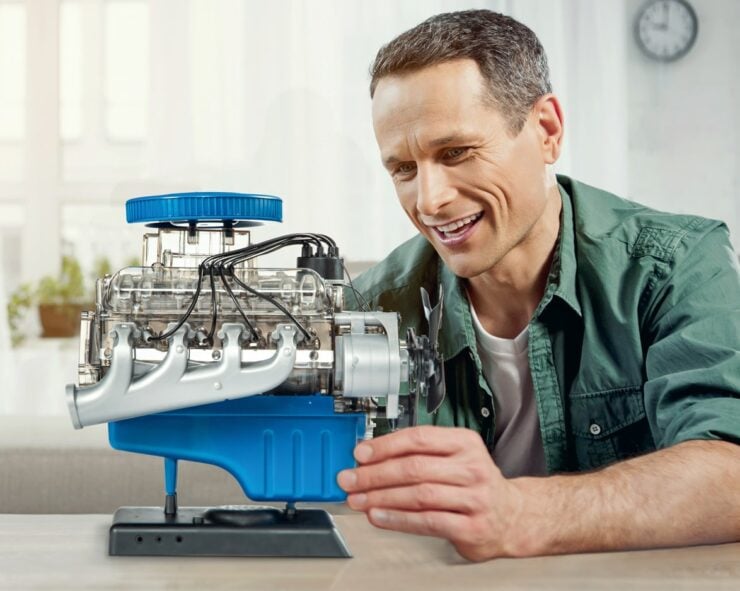
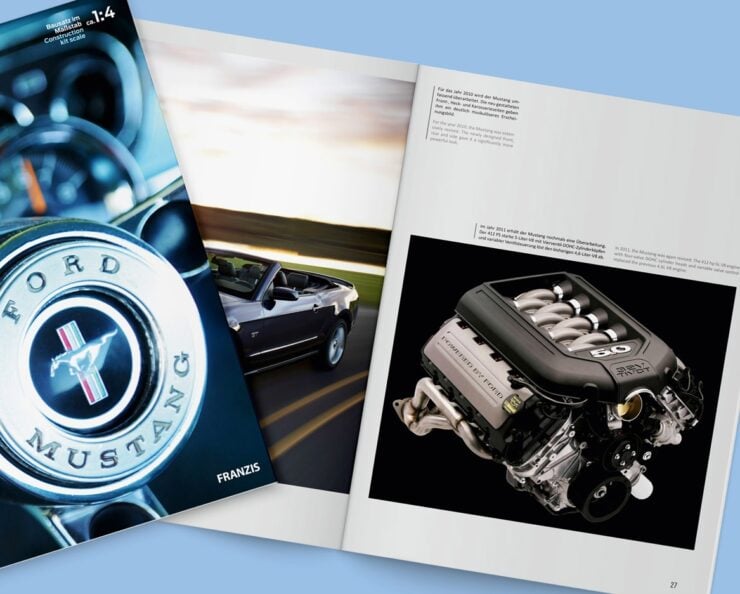
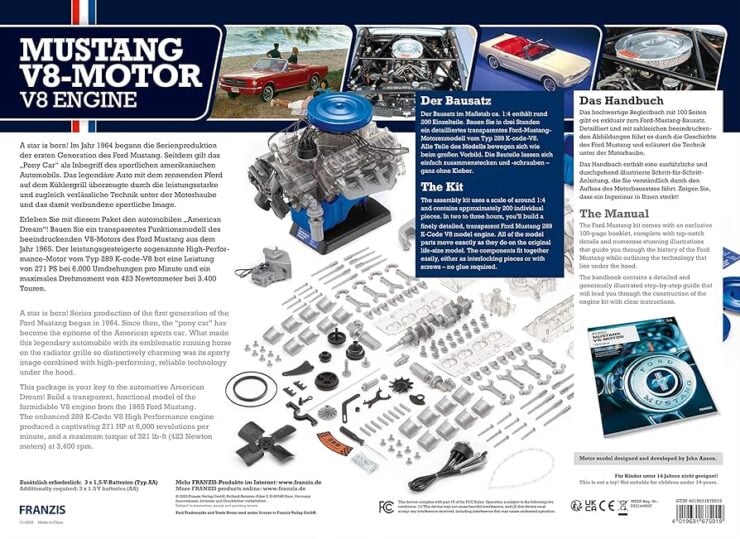
Images courtesy of Franzis

